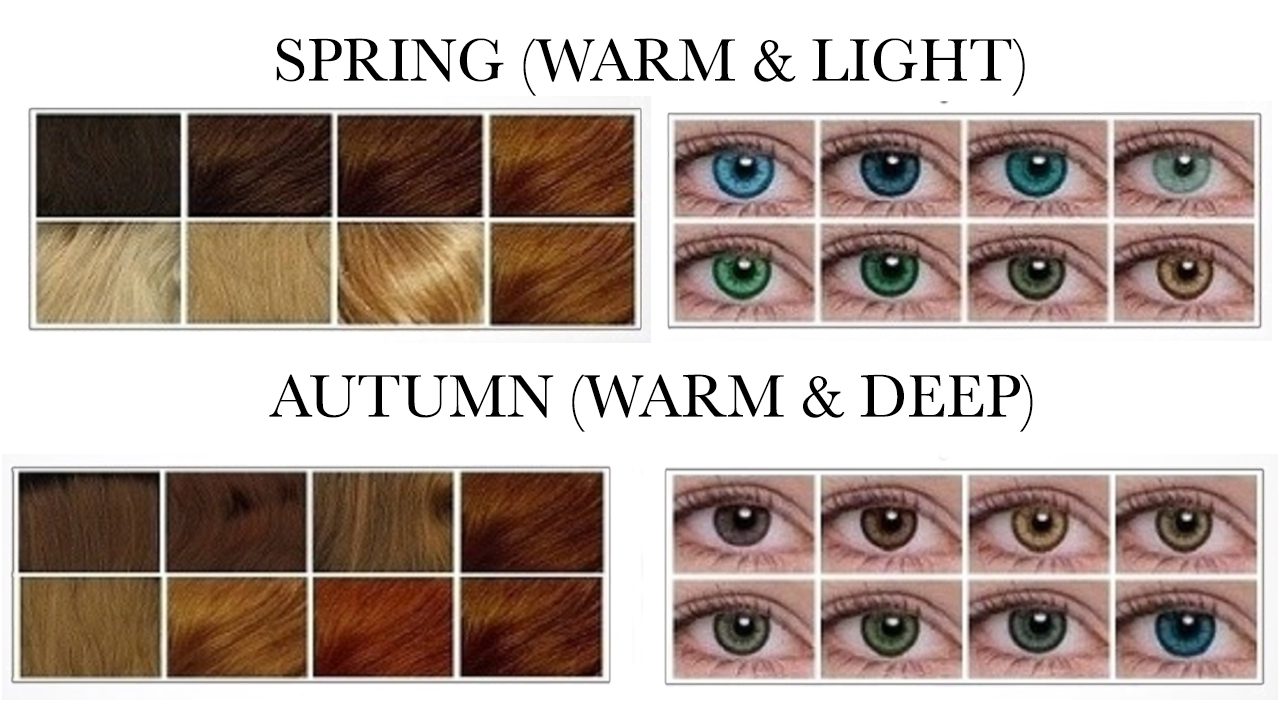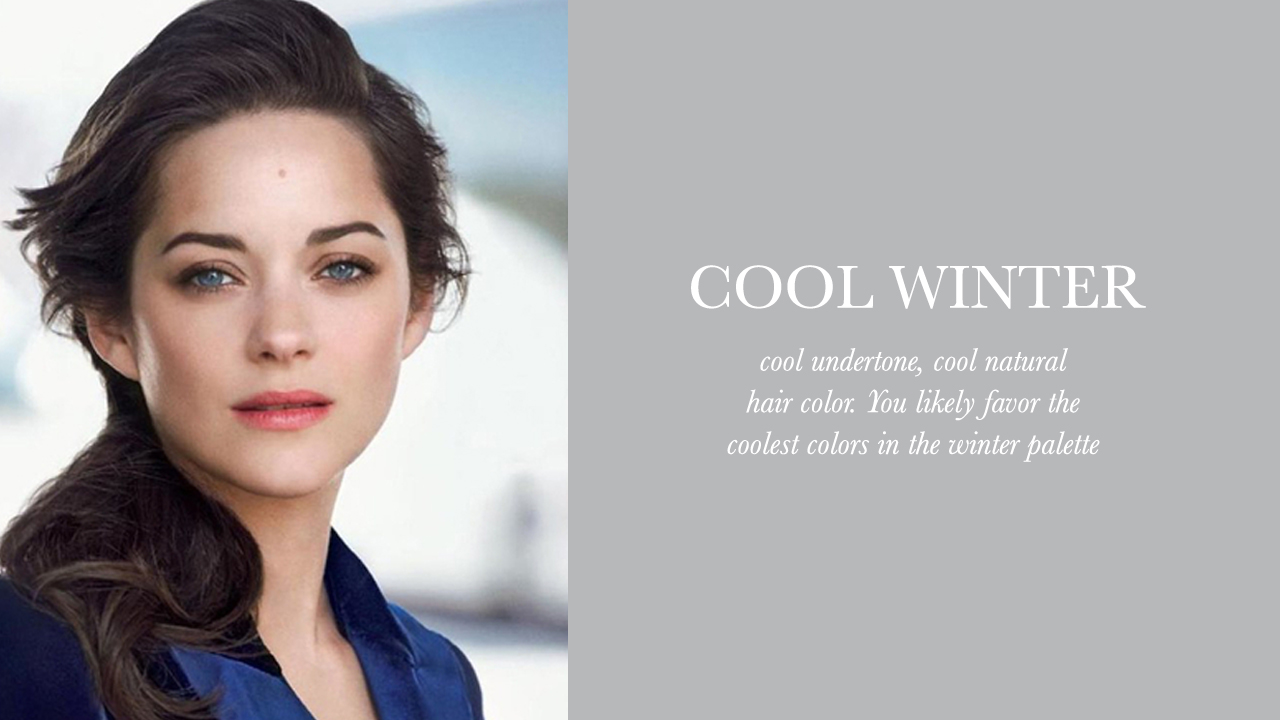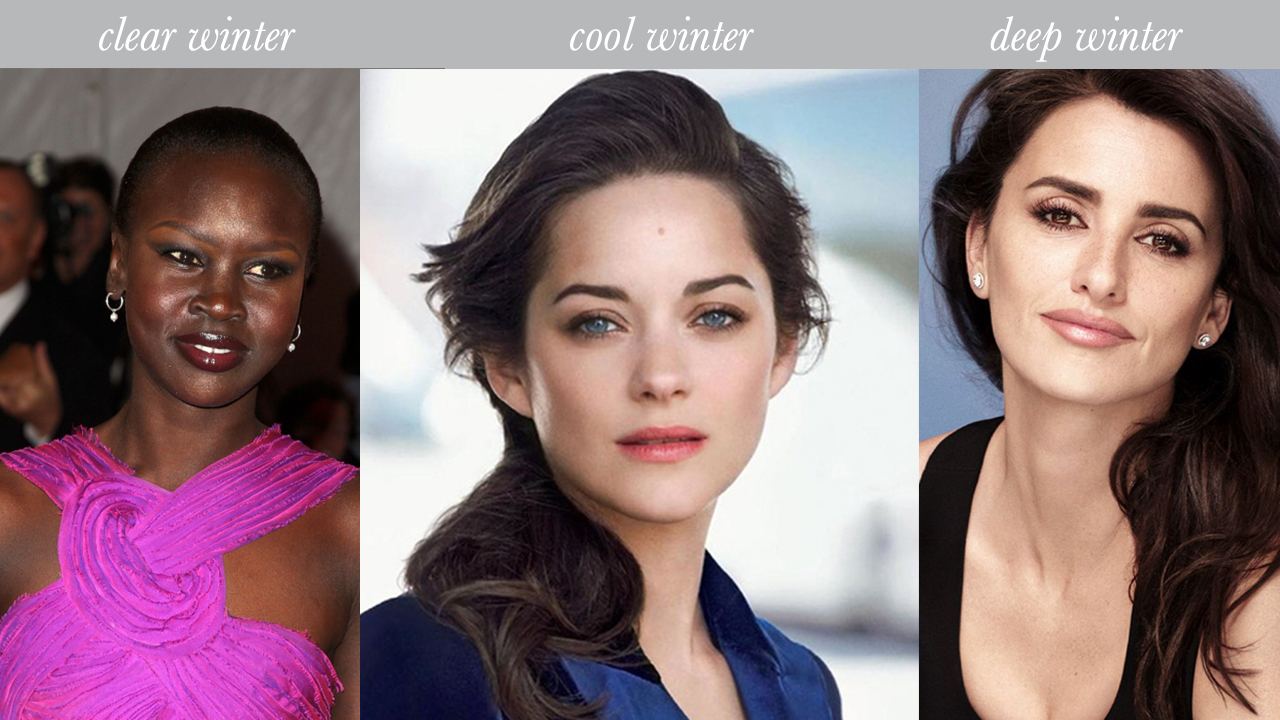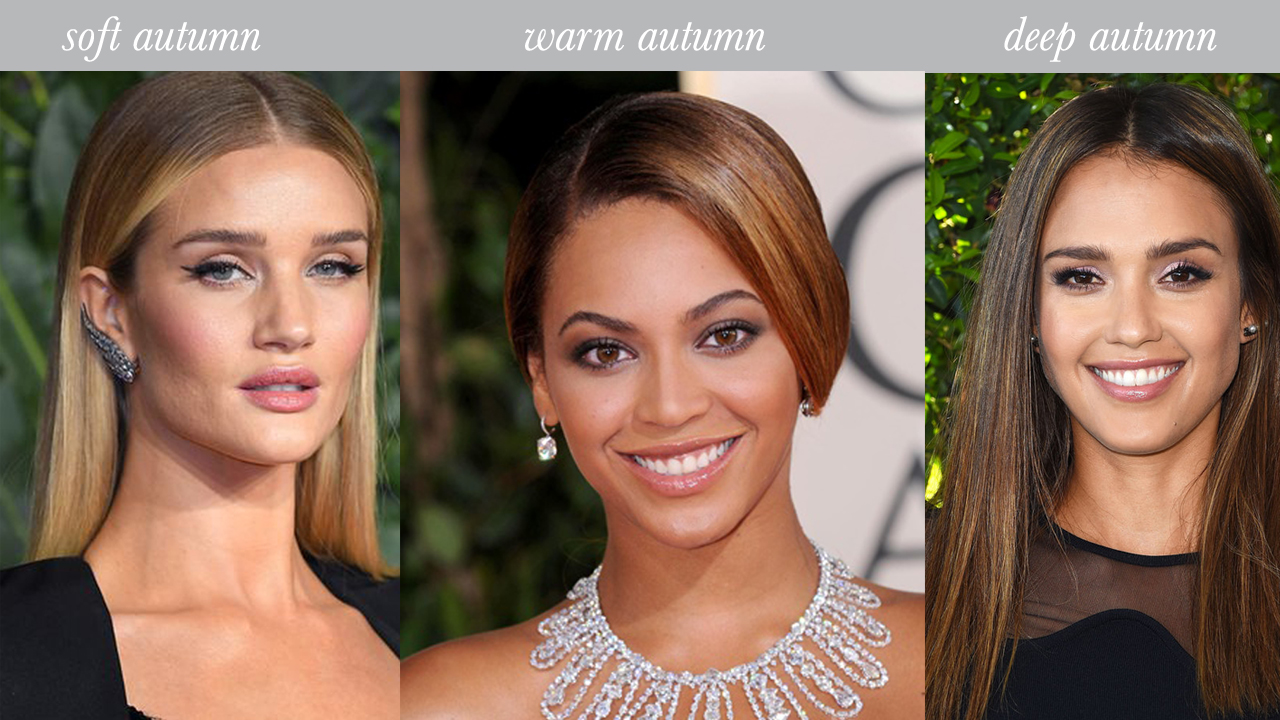Seasonal color analysis is a tool designed to help us figure out the colors that are synergy with our natural eye, hair and skin color and wearing these colors is thought to make our skin look brighter, our eyes clearer and our smiles whiter.
WHAT IS SEASONAL COLOR ANALYSIS? A color analysis theory that all colors can be broken into 2 sections:
hue (either cool or warm)
value (either light or deep)
Identifying which of these your hair, eyes and skin fall under results in 4 harmonious color groups named after the 4 seasons of the year - winter, spring, summer and autumn.
WHAT SEASON AM I?
WHAT’S YOUR UNDERTONE (HUE)? To determine your season, you need to first determine your undertone. To determine whether your skin is warm or cool, you can do the white paper test. Metal test or vein test. To learn more about these tests you can watch my video here. Before we move on I want to include a special caveat for olive skin. Olive skin can often be confused with warm skin, but it’s actually cool because the undertone being blue (cool) and the overtone being green gives you yellow but when working with color analysis, your undertone is what you need to focus on.
WHAT’S YOUR VALUE? Now that you know your undertone, look at your hair and eye color to determine if it’s naturally light or dark. Combining this with your undertone gives you 1 of 4 seasons.
THE COOL SEASONS - refers to the colors found in nature, not the temperature:
WINTER: Cool undertone, dark hair, dark eyes, high contrast
SUMMER: Cool undertone, light hair, light eyes
THE WARM SEASONS - refers to the colors found in nature, not the temperature:
AUTUMN: Warm undertone, dark hair, dark eyes
SPRING: Warm undertone, light hair, light eyes
WHAT IF I DON’T FIT INTO ANY OF THESE? As you can tell, this method leaves out quite a few combinations, so it was expanded to include:
hue (warm or cool)
value (light or deep)
chroma (clear or muted)
Combining these 3 together gives us 12 categories and your unique balance of them can help you determine the colors that have similar characteristics and will in theory work harmoniously with you.
So for example, I have light, olive skin (cool undertone, warm overtone), very dark (almost black hair) and very dark brown eyes. This makes me a winter and more specifically a deep winter and those colors like deep navy, rich, burgundy and crisp white DO look harmonious with my skin, hair and eyes. BUT I still wear warmer shades and when I do, I make sure I pick a cool toned, rosey blush and I like to pair the warmer color with one of my power colors - like black or navy. You can see the 12 seasons below.
WINTERS
SUMMERS
SPRINGS
AUTUMNS
HOW CAN I USE SEASONAL COLOR ANALYSIS & WHY IS IT HELPFUL?
Color theory can help you shop (especially online) because stylists and brands more often than not will put their models in their best colors so that the garment will look it’s absolute best. This can cause you to be drawn to something and maybe even buy it because it looks amazing on the model but may not be the best for you.
It can help us distinguish if we don’t like a piece of clothing because of how it fits, the shape, the cut etc or if it’s just because of the color. This can make decluttering easier and less confusing and also help reduce repeat purchases in the future
It’s helpful to know the colors that make you feel amazing for days you don’t feel your best and need a pick me up. Or, if you have an important meeting, job interview or just want to make a great and lasting first impression, your power colors can help you do that
Color theory can help with makeup shopping because you’ll be able to identify the shades that will work with your undertone. Also, I personally always wear my “flattering” colors when I’m shopping for makeup because they allow me to see my true coloring and don’t make me look too yellow or flat. In the past I’ve warn warmer shades that really bring out my yellow overtone and have been incorrectly matched to warm foundations that end up mixing poorly with the green and blue in my skin making me look orange. My ideal foundations are mostly neutral or true olive and I can sometimes get away with a hint of yellow - especially when I’m really red in the cheeks.
